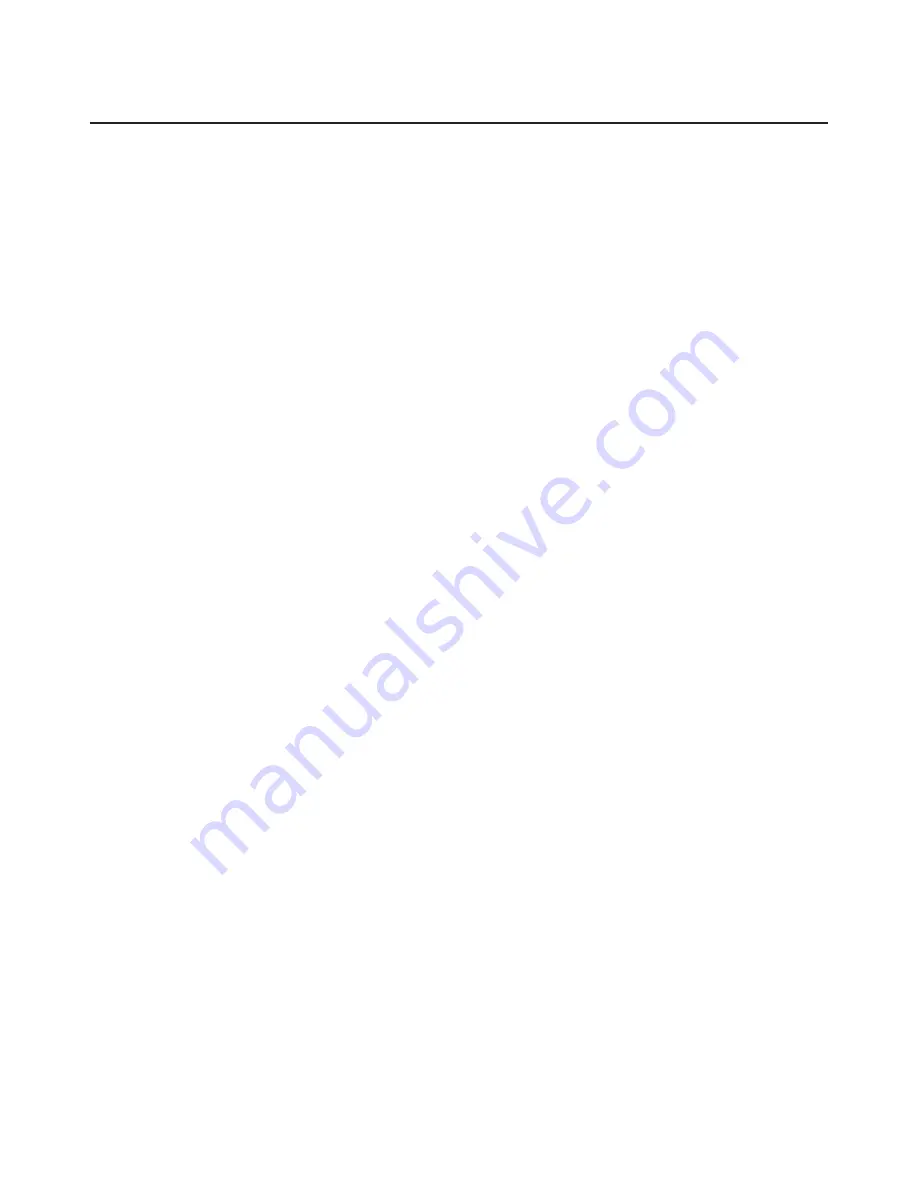
CRANKING.
MAINTENANCE OF STARTING SYSTEM.
The starting circuit should be inspected at regular intervals, the frequency of which should be determined
by the amount of service and the conditions under which the vehicle is operated. It is recommended that
such inspection be made at each 100 hours and include the following:
1. The battery should be checked with a hydrometer to be sure it is fully charged and filled to the proper
level with approved water. A load test should be made to determine battery condition. If dirt and cor-
rosion have accumulated on the battery, it should be cleaned with a solution of baking soda and water.
Be sure none of the solution enters the battery cells.
2. The starting circuit wiring should be inspected to be sure that all connections are clean and tight and
that the insulation is sound. A voltage loss test should be made to locate any high-resistance connec-
tions that would affect starting motor efficiency. This test is made with a low-reading voltmeter while
cranking the engine or at approximately 100 amperes, and the following limits should be used:
a. Voltage loss from insulated battery post to starting motor terminal - 0.3-volt maximum.
b. Voltage loss from battery ground post to starter frame - 0.1-volt maximum.
– NOTE –
If voltage loss is greater than the above limits, additional tests
should be made over each part of the circuit to locate the high-
resistance connections.
3. No lubrication is required on the starting motor except at the time of overhaul. Then lubricate the
entire shaft under Bendix Drive, fill grooves in armature shaft at drive end and pack gear box with 1.3
to 2.0 ounces of Lithium Soap Base Grease #1925 Molytex “O” or equivalent.
4. The starting motor should be operated for a few seconds with the ignition switch off to make sure that
the pinion engages properly and that it turns freely without binding or excessive noise. Then the
engine should be started two or three times to see that the pinion disengages properly when the engine
is turned off.
OVERHAUL OF STARTING MOTOR.
If during the above inspection any indication of starting motor difficulty is noted, the starting motor
should be removed from the engine for cleaning and repair.
REMOVAL OF STARTING MOTOR.
To remove the starting motor from the engine, first disconnect the ground cable from the battery post to
prevent short circuiting. Disconnect the lead from the starting motor terminal, then take out the mounting
bolts. The motor can then be lifted off and taken to the bench for overhaul.
PIPER AIRCRAFT
PA-32R-301/301T
MAINTENANCE MANUAL
80-10-00
Page 80-5
Reissued: July 1, 1993
4D15
Summary of Contents for PA-32R-301T SARATOGA S
Page 26: ...CHAPTER 4 AIRWORTHINESS LIMITATIONS 1C1 ...
Page 29: ...CHAPTER 5 TIME LIMITS MAINTENANCE CHECKS 1C4 ...
Page 53: ...CHAPTER 6 DIMENSIONS AND AREAS 1D6 ...
Page 64: ...CHAPTER 7 LIFTING AND SHORING 1D21 ...
Page 68: ...CHAPTER 8 LEVELING AND WEIGHING 1E1 ...
Page 72: ...CHAPTER 9 TOWING AND TAXIING 1E5 ...
Page 76: ...CHAPTER 10 PARKING AND MOORING 1E9 ...
Page 80: ...CHAPTER 11 REQUIRED PLACARDS 1E13 ...
Page 92: ...CHAPTER 12 SERVICING 1F1 ...
Page 126: ...CHAPTER 20 STANDARD PRACTICES AIRFRAME 1G17 ...
Page 127: ...THIS PAGE INTENTIONALLY LEFT BLANK ...
Page 139: ...CHAPTER 21 ENVIRONMENTAL SYSTEMS 1H5 ...
Page 188: ...CHAPTER 22 AUTOFLIGHT 1J7 ...
Page 193: ...CHAPTER 23 COMMUNICATIONS 1J12 ...
Page 203: ...CHAPTER 24 ELECTRICAL POWER 1J22 ...
Page 263: ...CHAPTER 25 EQUIPMENT FURNISHINGS 2A13 ...
Page 269: ...CHAPTER 27 FLIGHT CONTROLS 2A20 ...
Page 332: ...CHAPTER 28 FUEL 2D11 ...
Page 363: ...CHAPTER 29 HYDRAULIC POWER 2E18 ...
Page 404: ...CHAPTER 30 ICE AND RAIN PROTECTION 2G16 ...
Page 470: ...CHAPTER 32 LANDING GEAR 3A13 ...
Page 550: ...CHAPTER 33 LIGHTS 3D24 ...
Page 562: ...CHAPTER 34 NAVIGATION AND PITOT STATIC 3E12 ...
Page 582: ...CHAPTER 35 OXYGEN 3F8 ...
Page 604: ...CHAPTER 37 VACUUM 3G6 ...
Page 616: ...CHAPTER 39 3G18 ELECTRIC ELECTRONIC PANELS MULTIPURPOSE PARTS ...
Page 620: ...CHAPTER 51 STRUCTURES 3G22 ...
Page 636: ...CHAPTER 52 DOORS 3H14 ...
Page 650: ...CHAPTER 55 STABILIZERS 3I4 ...
Page 662: ...CHAPTER 56 WINDOWS 3I16 ...
Page 670: ...CHAPTER 57 WINGS 3I24 ...
Page 688: ...CHAPTER 61 PROPELLER 3J18 ...
Page 704: ...CHAPTER 70 STANDARD PRACTICES ENGINES 3K10 ...
Page 708: ...CHAPTER 71 POWER PLANT 3K14 ...
Page 737: ...CHAPTER 73 ENGINE FUEL SYSTEM 4A13 ...
Page 749: ...CHAPTER 74 IGNITION 4B1 ...
Page 783: ...CHAPTER 77 ENGINE INDICATING 4C11 ...
Page 793: ...CHAPTER 78 EXHAUST 4C21 ...
Page 801: ...CHAPTER 79 OIL 4D5 ...
Page 805: ...CHAPTER 80 STARTING 4D9 ...
Page 819: ...CHAPTER 81 TURBINES 4D23 ...
Page 833: ...CHAPTER 91 CHARTS WIRING DIAGRAMS 4E13 ...












































